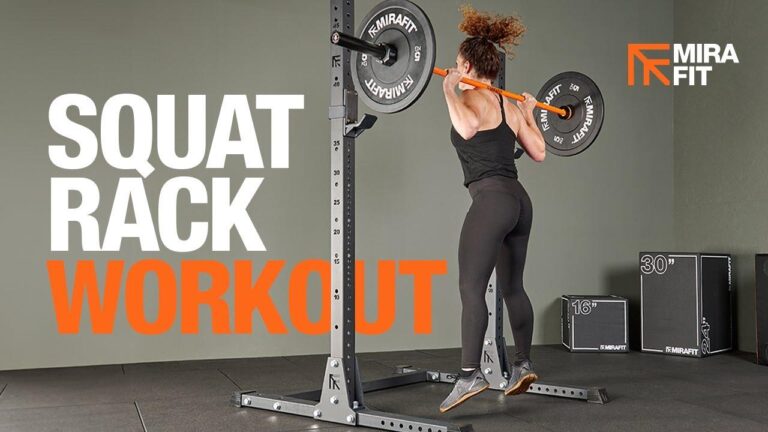If you’ve ever stepped into a gym, chances are you’ve spotted the squat rack — that sturdy station that’s practically a rite of passage for anyone serious about strength training. But let’s be honest, the squat rack can feel a little intimidating at first. How do you use it safely? What’s the best way too set it up? And how can you make sure you’re getting the most out of your squats without risking injury? Whether you’re a beginner or just looking to polish your technique,this friendly guide is here to help you master the squat rack with confidence. Ready to level up your leg day? Let’s dive in!
Table of Contents
- Choosing the Right Squat Rack for Your Space and Goals
- Perfect Your Form to Maximize Gains and Prevent Injury
- Essential Safety Tips Every squatter Should Know
- Incorporating Squat Rack Workouts into your Fitness routine
- The Way Forward
Choosing the Right squat Rack for Your Space and Goals
When selecting a squat rack, start by measuring your available space carefully to ensure the equipment fits without overcrowding your workout area. Consider ceiling height and floor clearance to accommodate full-depth squats and any additional moves like overhead presses.If space is limited,look for compact or foldable racks that don’t sacrifice stability or safety.Additionally, think about your workout style—whether you’re training for strength, hypertrophy, or general fitness—to identify features that align with your goals.
Key factors to evaluate include:
- Adjustability: Racks with adjustable safety bars and J-hooks allow for versatility as you progress or switch exercises.
- Weight Capacity: Ensure the rack supports more than your heaviest lifts to maintain safety.
- Build Quality: Solid steel frames and durable finishes enhance longevity and stability.
- Additional Features: Look for pull-up bars, plate storage, or dip attachments to maximize functionality.
Balancing these considerations helps you choose a squat rack that not only fits your space but also grows with your fitness journey,making every squat session safer and more effective.
Perfect Your Form to Maximize Gains and Prevent Injury
To truly reap the benefits of your workout, maintaining impeccable technique is non-negotiable. From the moment you step beneath the bar, focus on engaging your core and stabilizing your spine. Keep your chest up and gaze forward, ensuring your knees track over your toes without collapsing inward. Small adjustments, like positioning your feet shoulder-width apart and driving through your heels during ascent, help activate the right muscle groups, promoting balanced strength development while mitigating undue stress on your joints. Remember, lifting heavier weights is only advantageous if your body moves in harmony and alignment.
- Brace your core throughout the movement to protect your lower back.
- Control your descent rather than dropping quickly for better muscle engagement.
- Engage your glutes and hamstrings by pushing hips back as you squat down.
- Breathe rhythmically – inhale going down, exhale driving up to stabilize intra-abdominal pressure.
Mastering form isn’t just about safety—it directly translates to optimizing gains. By honing in on precise movement patterns, each squat becomes more efficient, targeting your quads, glutes, and hamstrings exactly as intended. Over time,this disciplined approach builds muscle quality and endurance,helping you break through plateaus. If you ever feel uncertain, using mirrors, recording your sets, or working with a coach can provide invaluable feedback. The right form transforms the squat rack from a potential hazard into your most powerful training ally.
Essential Safety Tips Every Squatter Should Know
Before loading your barbell, always inspect the squat rack for stability and secure any adjustable parts to avoid unexpected movement during your sets. position safety pins or spotter arms at an appropriate height to catch the barbell if you can’t complete a lift—this simple step can prevent serious injuries. Also, make it a habit to warm up properly, gradually increasing weight to let your muscles and joints adjust to the strain, reducing the risk of strains or sprains.
Maintaining proper form is crucial—not only for maximizing gains but for protecting your knees, back, and hips. Focus on controlled, intentional movements rather than just moving heavy weights. Don’t hesitate to use collars to secure plates firmly on the barbell, and always engage a workout buddy or utilize spotter services if you’re attempting personal records or lifting heavy. Remember, a safe squat session is a strong squat session!
Incorporating Squat Rack Workouts into Your Fitness Routine
Integrating the squat rack into your weekly fitness schedule offers a dynamic way to build strength, improve stability, and enhance overall performance. To get the most from your workouts,aim to vary your exercises by including not only customary back squats but also front squats,overhead squats,and even rack pulls. This variety ensures balanced muscle development and keeps your routine exciting. Additionally, maintaining proper form and gradually increasing the weight will reduce injury risks and help you progress safely.Remember, warming up with bodyweight movements before loading the bar is essential to prepare your muscles and joints.
Consistency paired with strategic planning transforms squat rack sessions from simple workouts into powerful growth opportunities. Consider these practical tips to seamlessly incorporate the rack into your routine:
- Schedule squat-focused days with complementary exercises like lunges and hamstring curls to create a balanced leg workout.
- Track your progress by noting weights, reps, and how you feel after each session, facilitating steady enhancement.
- Mix up your grips and stances to target different muscle groups and break through plateaus.
- Allow ample recovery by spacing out squat-intensive sessions to prevent overtraining.
The Way Forward
And ther you have it—your go-to guide for mastering the squat rack safely and effectively! Remember,consistency and proper form are your best friends on this journey.Don’t rush the process; listen to your body, start with manageable weights, and gradually challenge yourself.Whether you’re aiming for strength gains or overall fitness, the squat rack is an amazing tool to help you reach your goals. So next time you step up, squat with confidence and enjoy the progress. Happy lifting!

